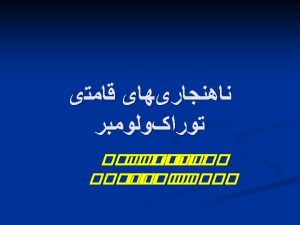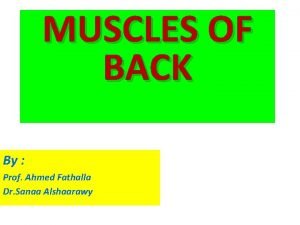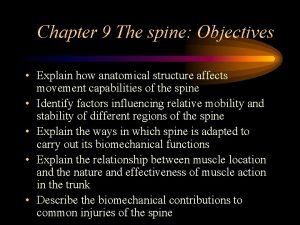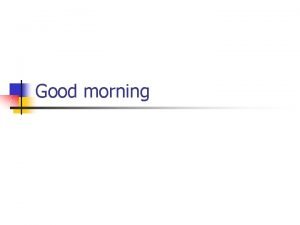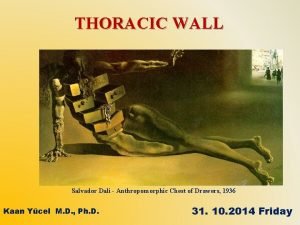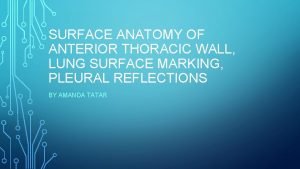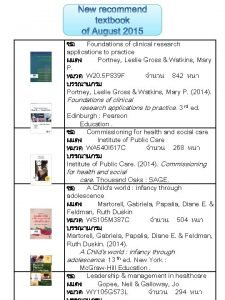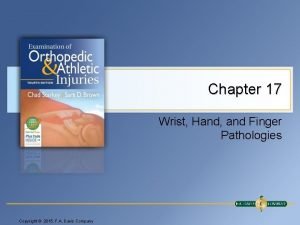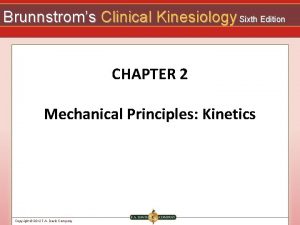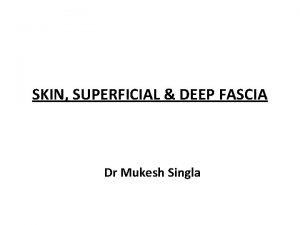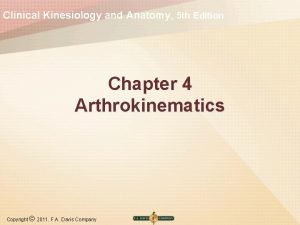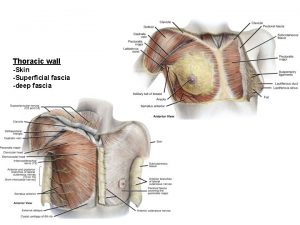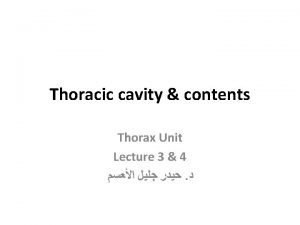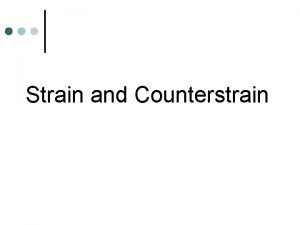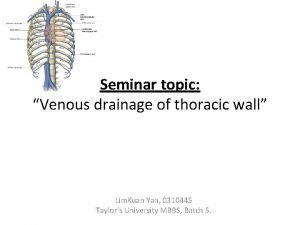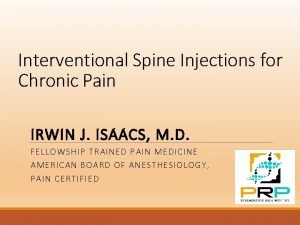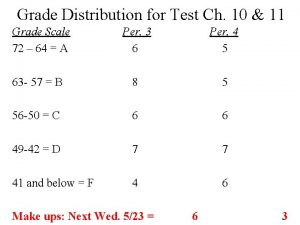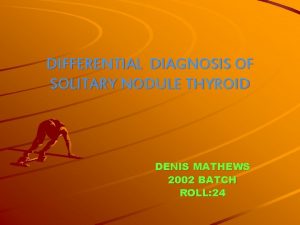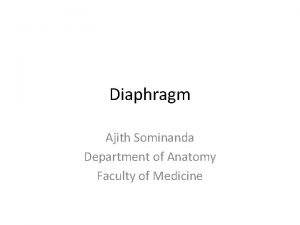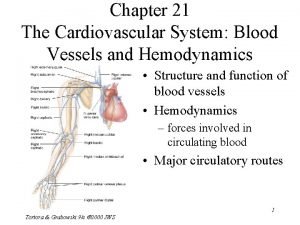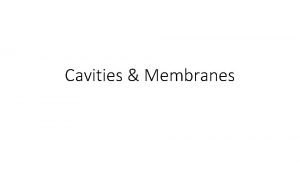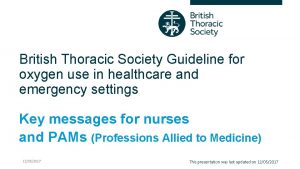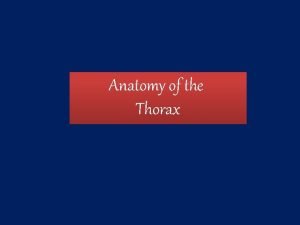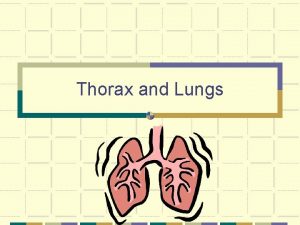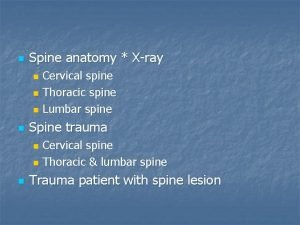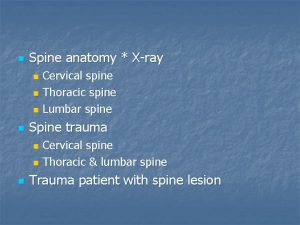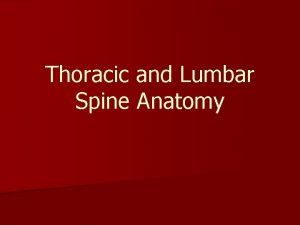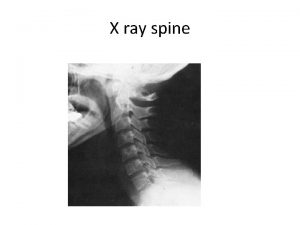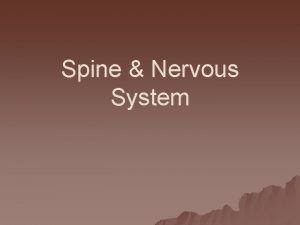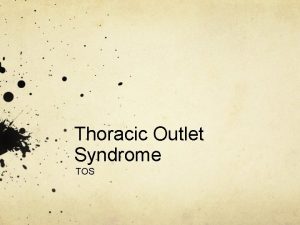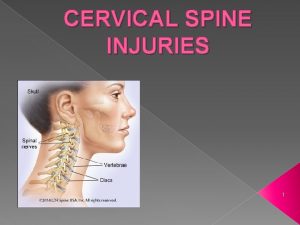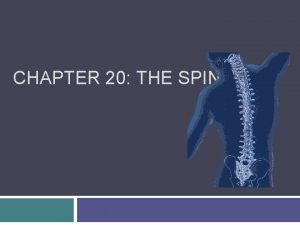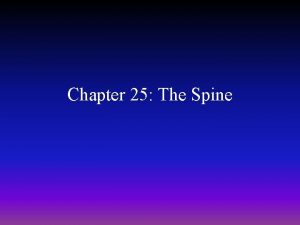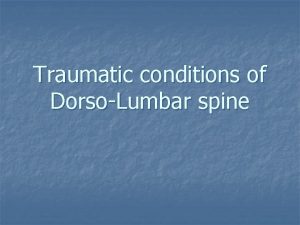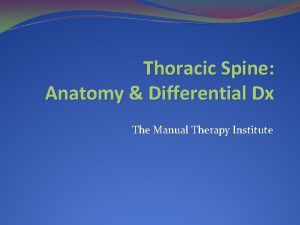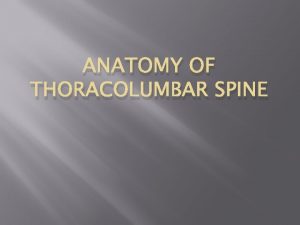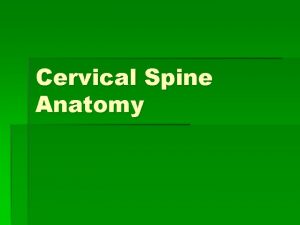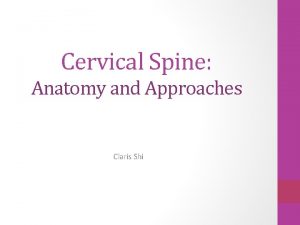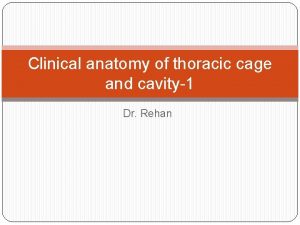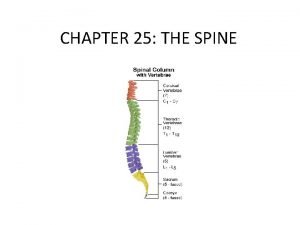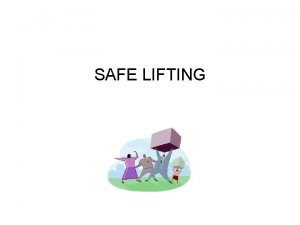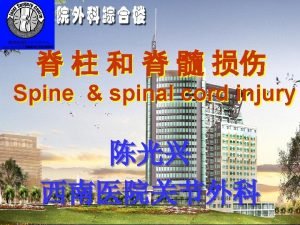Thoracic Spine Anatomy Clinical Applications Michael S Chang


































- Slides: 34

Thoracic Spine Anatomy: Clinical Applications Michael S. Chang, MD Clinical Faculty BGSMC Orthopaedic Residency Sonoran Spine Center Phoenix, Arizona February 16, 2013 CA# 11004 A 1

Disclosures Consultant Globus Integra Speaker’s Bureau Medtronic Depuy/Synthes Stryker CA# 11004 A 2

Acknowledgements CA# 11004 A 3

Thoracic Spinal Surgery • Surgery of the thoracic spine is generally for: – Deformity Correction • Scoliosis • Kyphosis – Decompression/Stabilization • Trauma • Tumor Resection • Herniated Disc CA# 11004 A 4

Instrumentation • Fixation options: – Pedicle screws – Hooks – Sublaminar wires CA# 11004 A 5

Thoracic Pedicle Screws • Advantages Strongest biomechanically • Greatest pullout strength • 84% stronger then hooks –Three column fixation • Segmental • Rotational –Does not encroach upon the canal – CA# 11004 A 6

Thoracic Pedicle Screws • Disadvantage –Limited direct visualization –Requires complete understanding of thoracic vertebra/pedicle anatomy CA# 11004 A 7

Insertion Techniques 1. Free hand 2. Stealth navigation 3. Fluoro assisted 4. K-wire guided CA# 11004 A 8

Why Freehand? • • Less radiation exposure Decreased operative times Uniquely provides tactile feedback With experience is proven to have very low complication rate CA# 11004 A 9

Step 1: Complete exposure 10 CA# 11004 A

Step 2: Entry Point • T 1 -3, 12 – Lateral edge of pars intersection with middle of TP • T 4, 5, 11 – Just medial to lateral edge of pars and inferior to proximal 1/3 of TP • T 7 -9 – Just lateral to middle of superior facet with superior edge of TP • T 6, 10 – Medial to lateral edge of pars with proximal 1/3 of TP CA# 11004 A 11

Step 2: Entry Point • T 1 -3, 12 – Lateral edge of pars intersection with middle of TP • T 4, 5, 11 – Just medial to lateral edge of pars and superior to proximal 1/3 of TP • T 7 -9 – Just lateral to middle of superior facet with superior edge of TP • T 6, 10 – Medial to lateral edge of pars with proximal 1/3 of TP CA# 11004 A 12

Anatomy • Pedicles – Height enlarges caudally • 9. 9 mm at T 1 • 15. 8 mm at T 12 – Width is limiting dimension • 3. 6 – 8. 7 mm • Narrowest between T 4 -T 6 • Wider at T 11, T 12 then L 1 Zindrick, Spine 2000 CA# 11004 A 13

Step 3: Probing Outward Gear Shift until the Base of the Pedicle Inward Gear Shift into the vertebral body After Base of The Pedicle CA# 11004 A 14

Anatomy • Coronal pedicle axis – Gradually decreases from T 1 – T 12 – Most angulated screw at T 1 • Pedicle Length – Increases caudally slightly • 16. 1 – 19. 1 mm Mc. Cormack, Neurosurgery 1995 CA# 11004 A 15

Step 4: Pedicle palpation 1. Palpate all 5 bony walls of the pedicle (cephalad, caudad, medial, lateral, and floor). 2. Mark the length of the tract and measure CA# 11004 A 16

Anatomy • Interpedicular distance – Decreases to T 4, then increases • Least amount of error tolerance for medial breach • Dura within 1 mm from medial wall Liljenqvist, SRS 2001 CA# 11004 A 17

Beware Concavity CA# 11004 A 18

Step 5: Tapping and Re-palpation 1. Tap 1 mm smaller than the proposed screw. 2. Use the sounder a second time to assess pedicle walls CA# 11004 A 19

Step 6 : Screw placement • Better purchase – Increased diameter • Plastic deformation – Increased screw length • 50 -80% body optimal CA# 11004 A 20

Step 7: Confirmation 1. 2. 3. 4. Intraoperative X-rays; Harmonious screw position Triggered EMG; Helpful, but no definite minimum EMG Laminotomy O-arm CA# 11004 A Raynor, Lenke, Spine 2002 21

Safety • • • No postoperative neurologic deficit No thoracic nerve root irritation No radicular chest wall complaints No screw revision No vascular or visceral injuries n=3204 TPS CA# 11004 A Lenke, Bridwell AAOS 2003/SRS 2002 22

Misplaced Screws CONTAINED (CT): inside the pedicle NONCONTAINED GRADE A (GA): <2 mm violation GRADE B (GB): 2 -4 mm violation GRADE C (GC): >4 mm violation CT GA GB CA# 11004 A GC GC GB 23

Early Experience 400 TPS • • No breach <2 mm breach 2 -4 mm breach >4 mm breach 58% 30% 9% (6% lat, 3% med) 3% (lat) CA# 11004 A 24

Late Experience 200 TPS • • No breach < 2 mm breach 2 -4 mm breach > 4 mm breach 91% 7% 2% (lat) 0% CA# 11004 A 25

Conclusion • Modern thoracic spine surgery relies heavily on pedicle screws • Rigorous understanding of anatomy is necessary in order to ensure low complication rates and excellent patient outcomes CA# 11004 A 26

Lenke 1 AN CA# 11004 A 33% Correction on Bending 27

Lenke 1 AN CA# 11004 A Intraop apical derotation 28

Screw Derotation CA# 11004 A Prior to rod placement 29

Concave Rod Placement CA# 11004 A 30

Pre-Derotation Post-Derotation CA# 11004 A 31

Lenke 1 AN PSF-T 4 -L 2 97% Correction CA# 11004 A 32

Preop Scoliometer 22º 5 Days Post Scoliometer 3º CA# 11004 A 8 Mo Post Scoliometer 4º 33

Thanks Michael S. Chang, MD CA# 11004 A 34
 Posturing medical
Posturing medical Auscultatory triangle
Auscultatory triangle Muscles of thoracic spine
Muscles of thoracic spine Clinical biomechanics of the spine
Clinical biomechanics of the spine Typical intercostal space
Typical intercostal space Anatomy of thorax
Anatomy of thorax Jugular notch
Jugular notch Foundations of clinical research applications to practice
Foundations of clinical research applications to practice Wrist joint clinical anatomy
Wrist joint clinical anatomy Cranial nerves sensory motor mixed
Cranial nerves sensory motor mixed Clinical kinesiology and anatomy 6th edition
Clinical kinesiology and anatomy 6th edition Roof nasal cavity
Roof nasal cavity Clinical anatomy of breast
Clinical anatomy of breast Clinical kinesiology and anatomy 6th edition
Clinical kinesiology and anatomy 6th edition Which of the following elevates the ribs?
Which of the following elevates the ribs? Fascia of thoracic wall
Fascia of thoracic wall Sibson fascia
Sibson fascia Plexo
Plexo Dressed to the
Dressed to the Rib counterstrain
Rib counterstrain Internal thoracic artery
Internal thoracic artery Clavicular notch of the manubrium
Clavicular notch of the manubrium Lumbar referral patterns
Lumbar referral patterns Pig thoracic cavity diagram
Pig thoracic cavity diagram Rule of 12 in thyroid
Rule of 12 in thyroid Cupola diaphragm
Cupola diaphragm Thoracic kyphoscoliosis definition
Thoracic kyphoscoliosis definition Horizontal fissure
Horizontal fissure Branches of aorta
Branches of aorta Thoracic membranes
Thoracic membranes British thoracic society guidelines oxygen
British thoracic society guidelines oxygen Ventral cavity
Ventral cavity Which membrane encloses the abdominopelvic viscera?
Which membrane encloses the abdominopelvic viscera? Azygos and hemiazygos veins
Azygos and hemiazygos veins Normal ap diameter of chest 2:1
Normal ap diameter of chest 2:1
